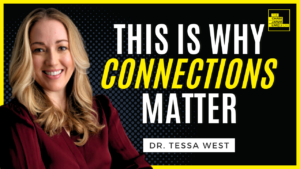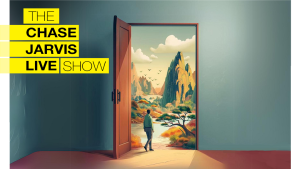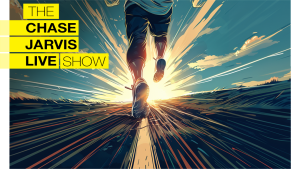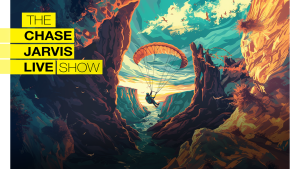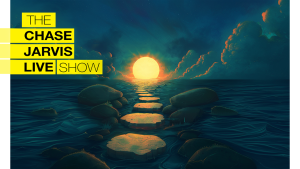Today’ on the show I’m answering your questions.
The first question I don’t get asked enough, but I’ve certainly thought a lot about: how do balance career, exercise, and creative time. While this can be different for everyone, I’ve found ways to protect the habits that are necessary for my own mental health.
Listen to the Podcast
Re-thinking Recovery Days
Taking care of your health while working hard in other areas is a constant challenge for professional creators. Ask a full-time creator how many hours they work… I bet it will be a lot of hours. When you are the engine driving the business, it can feel like days off are nothing more than stagnation. But is that true? If we agree prioritizing health and wellbeing is critical to professional success, then it becomes clear: off days aren’t wasted.
Just the opposite, in fact. “Off days” are where you get to experience life, and bring those experiences into your work. Sleep, rest, spend time with friends, exercise, whatever you do to recover, it’s all fair game. Recovery days are also when you have the freedom to test, experiment and explore new techniques, and return to work with vigor.
Especially if you’re just getting started, you have to over index on the work up front. And yet part of the thing that is crystal clear to me is that I’m half the person that I want to be if I don’t exercise. So put your own oxygen mask on before assisting other passengers- that’s the way that I approach taking care of my body and mind.
Establishing Positive Habits
If you’ve seen my morning routine video on YouTube you know that I value the first 90 minutes of the day like gold. As my good friend Tim Ferriss says, “Win the morning, win the day.” The fitness aspect, the personal health, the mental health- how you approach the first 90 minutes of the day is mission critical. The short of it is, find a morning practice that serves your goals. If you’re a creator, explore what the formula is for putting yourself in position to create. If you are a manager, find out what you need to do to be the best leader you can possibly be.
One tip I’ve found helps is: I block out time and own the day. Incoming distractions are always a threat, but by keeping to my schedule I avoid working or creating from an unproductive, fatigued headspace.
Finally, how do you end your day? Do you have a system for winding down and getting your body and mind ready for sleep? Early in my career I discovered the fact that I was directly responsible for my productivity, and my physical and mental health were crucial to that end. So, take care of your body.
Balancing Work, Life and Fitness
As far as the concept of work/life balance, I did another video called work/life balance is a myth. It’s a thing we’re all wrestling with. We all want to work so hard. We all are motivated by the careers that we want to have, especially when we don’t have that thing. And sometimes we end up working instead of working out or working instead of eating well or sleeping. I can’t dictate how you prioritize your health and wellbeing, but I can tell you from personal experience, it should be priority number one.
Next, Dylan called in asking about how to manage two similar but different passions. We’re all multi-hyphenates. Our passions have many layers and explorations. However, clients for one passion may not be the same for another. We get into how to manage it and at what point does it make sense to combine all your work in a single portfolio.
How to Display Distinct Types of Photography in Your Portfolio
Generally, the answer is, if you want to get hired, build and grow a business, focus on one or the other. For example, someone who is a designer and they photograph drag racing or a musician who also is a designer, and they wanted to put those two things together- dividing your brand across distant mediums, different styles, etc. is a recipe for confusion.
The good news? You can be both, you can have both of those types of photographs in your portfolio and wear a variety of hats- but over time, over the course of your career. When we look to leaders in the creative industry or in business, it can appear like everyone is a polymath. But I assure you, anyone who ascends to the top of their field did so through intense focus. Once they were established, then they branched out or reinvented themselves.
Facing the Reality of Clients’ Perception
If you want to get paid to shoot mail nudes, then that’s what your portfolio should be. And if you get hired on the side to shoot some families, that’s great. My question back to you is what’s your priority? Build your portfolio, your work, your business around the thing that you want to be known for, because that’s the way that you’re going to get hired. Anything else is a side project.
If someone offers you a side project shooting family photos, great. But as soon as you try and put those two things together before you have a reputation, before you have status in an industry, you’re going to confuse people. And if you confuse people, it’s going be hard for them to write you a check.
Evolution Throughout Your Career
Now let’s fast forward in the future. You are the most well known photographer in one of those two genres. You can put whatever you want in your portfolio. You can package yourself. You can be so uniquely you because you have a reputation. You have history of getting work and delivering on it. And that’s where this real nuance comes in. If you take a look at my site, I’m obviously a photographer. That’s the background, but I’ve got entrepreneurial stuff on there. I’ve got interviews, I’ve got storytelling around CreativeLive, all those things in one place. Of course, I lead with my true passion as a photographer, because it connects all those other things. But I could really only do that after I was very, very well established.
Enjoy!
Listen to the Podcast
Subscribe

This podcast is brought to you by CreativeLive. CreativeLive is the world’s largest hub for online creative education in photo/video, art/design, music/audio, craft/maker, money/life and the ability to make a living in any of those disciplines. They are high quality, highly curated classes taught by the world’s top experts — Pulitzer, Oscar, Grammy Award winners, New York Times best selling authors and the best entrepreneurs of our times.





